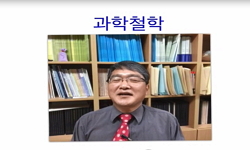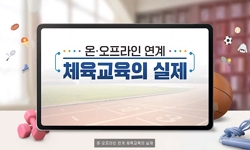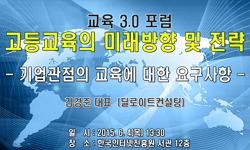This paper aims to nurture future leaders with integrative thinking ability by developing a model of convergence lesson for mathematics using other subjects and give an overview of the whole process of building a convergence lesson by conducting the l...
http://chineseinput.net/에서 pinyin(병음)방식으로 중국어를 변환할 수 있습니다.
변환된 중국어를 복사하여 사용하시면 됩니다.
- 中文 을 입력하시려면 zhongwen을 입력하시고 space를누르시면됩니다.
- 北京 을 입력하시려면 beijing을 입력하시고 space를 누르시면 됩니다.
수학 교과와 타 교과간의 융합 수업 모형 개발 및 적용 과정에 대한 연구 = Study on the development of convergence lesson about mathematics with other subject and application process
한글로보기https://www.riss.kr/link?id=T12940233
- 저자
-
발행사항
경산 : 영남대학교 교육대학원, 2012
-
학위논문사항
학위논문(석사) -- 영남대학교 교육대학원 , 수학교육 수학교육 , 2012. 8
-
발행연도
2012
-
작성언어
한국어
- 주제어
-
발행국(도시)
경상북도
-
형태사항
89 ; 26 cm
-
일반주기명
지도교수: 김진환
- 소장기관
-
0
상세조회 -
0
다운로드
부가정보
다국어 초록 (Multilingual Abstract)
This paper aims to nurture future leaders with integrative thinking ability by developing a model of convergence lesson for mathematics using other subjects and give an overview of the whole process of building a convergence lesson by conducting the lesson for second graders in high school
Papers from the 「2011 STEAM workshop」 held by the Ministry of Education Science and Technology have been analyzed in order to develop a model of convergence lesson of mathematics in conjunction with other subjects. More focus has been put on the development of the most appropriate and applicable convergence lesson model by using an analysis of Forgaty's inter-subject convergence lesson, various models of problem solving learning and creative learning methods of constructivism.
This lesson model has been modified and supplemented as it is applied in a real lesson. And it was conducted as a convergence lesson to the subject of "Chaos, the fractal and complexity system" for second graders in high school. Interviews with teachers and students and a student survey were performed to verify the significance and effect of the convergence lesson. The results are as follows.
First, the structured process of convergence lessons which integrates the Humanities, Social Science and Natural Science has been completed enabling the students to interpret and analyze various subject matters and social phenomenon through mathematical insight.
Second, the convergence lesson was based on a cyclic process with 7 steps: selection of a topic, selection of the subject concerned, designing the lesson, mapping out the lesson plan for each subject and developing teaching materials, having a final discussion on the whole lesson, performing the lesson and evaluating the lesson.
Third, while performing the convergence lesson, the teachers had a great opportunity to study on the connections between the subjects and reflect on the importance of the integration of learning.
Fourth, provided with various perspectives on the topic, the students had a chance to learn about the connections between the Humanities, Social Science and Natural Science in the convergence lesson. This lesson also worked as an experience of success for the students by allowing them to develop their ability to think, to analyze problems and solve them creatively.
Fifth, close cooperation between the teachers played a very important role in performing the convergence lesson. The process of communicating between the teachers, sharing their academic perspectives and knowledge and observing each other's lesson made it possible to make the convergence lesson meaningful.
It is also suggested that this convergence lesson model will be utilized to develop many other convergence lessons so as to increase awareness of the utilization of mathematics and improve students' creativity and problem solving ability in their everyday life.
국문 초록 (Abstract)
본 연구는 융합적 사고능력을 가진 미래인재를 양성하기 위하여 수학교과와 타 교과간의 융합 수업 모형을 개발하고, 이를 고등학교 2학년 학생들에게 적용한 융합 수업을 실행하여 수학교...
본 연구는 융합적 사고능력을 가진 미래인재를 양성하기 위하여 수학교과와 타 교과간의 융합 수업 모형을 개발하고, 이를 고등학교 2학년 학생들에게 적용한 융합 수업을 실행하여 수학교과와 타 교과간의 융합수업 과정의 전반에 대해 알아보고자 하였다.
수학 교과와 타 교과간의 융합 수업의 모형을 개발하기 위하여 교육과학 기술부가 주관한 「2011년 융합인재교육(STEAM) 성과 발표회 자료를 분석하였다. 또한 Forgaty의 교과간 융합의 유형, 문제 중심 학습의 다양한 모형과 구성주의의 학습방법을 분석하여 가장 적합하고 응용이 용이하다고 생각되는 융합 수업의 모형을 개발하였다. 이렇게 개발된 모형은 실제 수업에 적용하면서 수정․보완되었다. 그리고 이를 고등학교 2학년 학생들을 대상으로 ‘카오스, 프랙탈 그리고 복잡계’라는 주제의 융합 수업을 진행하였다. 융합 수업의 의미와 효과를 알아보기 위해 교사 인터뷰, 학생 인터뷰, 학생 설문조사를 실시하고 녹취록을 작성하여 분석하였다. 이를 통해 얻어진 결과는 다음과 같다.
첫째, 인문사회예불분야와 자연과학분야가 융합 되고, 이를 통해 학생들이 교과, 또는 사회 현상을 수학의 관점에서 확장하여 융합적인 시각으로 분석하고 해석할 수 있게 하는 융합수업의 과정에 대한 모형을 개발하였다.
둘째, 융합 수업의 과정은 주제선정, 관련 교과 선정, 수업 설계, 교과별 수업지도안 작성 및 교재 제작, 융합 수업 전 과정에 대한 최종 논의, 수업 실행, 수업 평가의 7단계로 설계되며 수업이 실행된 후 평가의 내용을 피드백하여 다음 주제선정이 이루어지는 순환적 과정이다.
셋째, 융합 수업의 모형을 활용하여 수업을 한 결과 교사들은 각 교과의 연결성과 응용에 대해 많은 공부를 하는 계기를 마련하게 되었으며 학문의 융합의 중요성에 대해 생각하는 기회를 가질 수 있었다.
넷째, 학생들은 융합 수업을 통하여 인문사회계열과 자연과학계열의 연관성에 대해 배우고 주제에 대한 다양한 시각을 가지게 되었다. 또한 학생 스스로 문제 해결 방법을 찾아가는 창의적 설계를 바탕으로 학생이 문제를 해결하였다는 성공의 경험을 가지게 되었다. 그 결과 문제를 발견하고 분석하며 융합적으로 사고하여 창의적인 해결방안을 모색하는 능력을 키울 수 있었다.
다섯째, 융합 수업을 실행함에 있어 교사 사이의 협력이 매우 중요한 역할을 했다. 의미 있는 융합 수업이 이루어지기 위해서는 서로의 교직관과 교과 지식을 공유하고 수업을 참관·평가하며 수업 실행 과정에서 충분한 소통이 있어야 함을 알 수 있었다.
본 융합 수업의 모형은 학생들이 수학의 유용성을 인식하고 통합적·입체적 시각 및 실생활에서의 문제 해결능력과 창의력을 향상시키기 위한 융합 수업 프로그램의 개발에 적극 활용될 수 있을 것으로 시사된다.
목차 (Table of Contents)
- - 목 차 -
- 국 문 초 록
- Ⅰ. 서론
- - 목 차 -
- 국 문 초 록
- Ⅰ. 서론
- 1. 연구의 필요성 및 목적
- 2. 연구문제 및 연구의 제한점
- Ⅱ. 이론적 배경
- 1. STEAM 교육
- 가. 통합, 융합, 통섭
- 나. 통합교육과정과 융합인재교육(STEAM)
- 다. Forgaty의 교과간 통합의 유형
- 2. 수학 교육과 STEAM 교육
- 가. 융합과 수학
- 나. STEAM 교육과 수학교육
- 3. 학습이론적 배경
- 가. Holistic 교수학습이론
- 나. 문제 중심 학습(Problem Based Learning)
- 4. 철학적 배경
- 가. 구성주의
- Ⅲ. 연구 방법 및 절차
- 1. 연구대상
- 2. 자료 수집 및 분석
- 가. 융합 수업 모형의 개발
- 나. 융합 수업 모형의 적용
- 3. 연구 과정
- Ⅳ. 연구 결과 및 논의
- 1. 융합 수업 모형의 개발
- 가. 융합 수업 모형
- 나. 주제 선정
- 다. 관련 교과 선정
- 라. 수업 설계
- 마. 각 교과별 수업지도안 작성 및 교재 제작
- 바. 융합 수업 전 과정에 대한 최종 논의
- 사. 수업 실행
- 아. 수업평가
- 2. 수학 교과와 타 교과간의 융합 수업 모형의 적용
- 가. 주제 선정
- 나. 관련 교과 선정
- 다. 수업 설계
- 라. 각 교과별 수업지도안 작성 및 교재 제작
- 마. 융합 수업 전 과정에 대한 최종 논의
- 바. 수업 실행
- 사. 수업평가
- Ⅴ. 결론 및 제언
- 1. 결론
- 2. 제언
- 참고문헌
- 영문 요약










